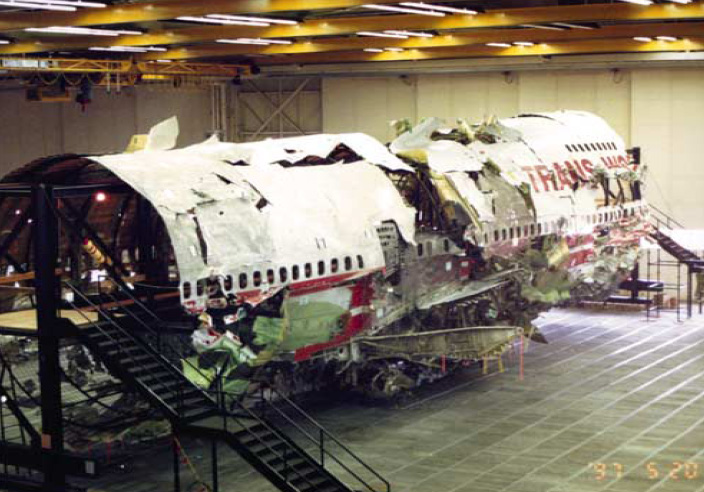
A new documentary on a plane crash 17 years ago must have the National Transportation Safety Board rattled, because the NTSB today announced an unusual background briefing next week in the crash of TWA Flight 800.
“The TWA Flight 800 investigation remains one of the NTSB’s most extensive and exhaustive investigations; the final report includes more than 400 pages of detailed information. In addition, the NTSB’s docket, which has been available to the public since the late-1990s, contains more than 17,000 pages of supporting material,” the NTSB said today in announcing the briefing.
It’s comes less than a week after it was requested to reopen the investigation into the crash. The airplane exploded in mid-air on July 17, 1996 after taking off from New York on its way to Paris. The National Transportation Safety Board concluded the probable cause of the crash was an accidental fuel tank explosion.
Conspiracy theorists, however, are out with a new documentary charging it was all a cover-up. The documentary will air next month, and it’s pretty clear the NTSB wants to get ahead of it.
This week, Popular Mechanics tried to get ahead of the conspiracy too, re-examining the evidence and finding that the cause the NTSB found was actually more scary than the ones the conspiracy theorists are currently suggesting:
At the time, there was very little engineering work done regarding fuel tank flammability. The NTSB investigation spawned a team of experts dedicated to studying the issue, which within aviation circles was more heated than the conspiracy chatter: In the aftermath of the crash, any fix that investigators suggested could lead to regulations that cost millions to implement.
The investigators studied it all: the chemistry of the fuel, how the fuel/air vapor could ignite, how the flames could move through the wing after bursting from the tank. They established two independent models to simulate the pressure differences inside the wing, a key part of how the fiery fluid would spread. The Safety Board contracted the University of Nevada to analyze the properties of jet fuel vapor. The team ran hundreds of simulations, brought in Boeing engineers to assess the damage of the airliner’s remains, and solicited the opinion of an explosives dynamics expert at the California Institute of Technology. There were flight tests done at the same temperature and conditions as TWA Flight 800 and full-scale fuel tank explosion tests conducted in England.
The litany above actually leaves out tests and academic efforts to understand what happened. All this is to say: The study of TWA 800 was not a sealed-off investigation done by a cadre of bureaucrats. The results were meant to be published, shared, and serve as the foundation of new regulations.
